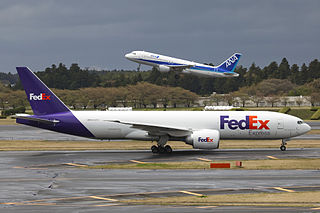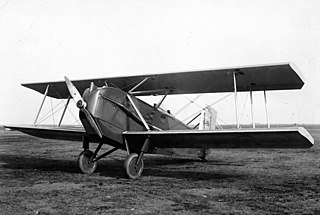
Philately is the study of postage stamps and postal history. It also refers to the collection and appreciation of stamps and other philatelic products. While closely associated with stamp collecting and the study of postage, it is possible to be a philatelist without owning any stamps. For instance, the stamps being studied may be very rare or reside only in museums.

A postage stamp is a small piece of paper issued by a post office, postal administration, or other authorized vendors to customers who pay postage. Then the stamp is affixed to the face or address-side of any item of mail—an envelope or other postal cover —which they wish to send. The item is then processed by the postal system, where a postmark or cancellation mark—in modern usage indicating date and point of origin of mailing—is applied to the stamp and its left and right sides to prevent its reuse. Next the item is delivered to its addressee.

A postmark is a postal marking made on an envelope, parcel, postcard or the like, indicating the place, date and time that the item was delivered into the care of a postal service, or sometimes indicating where and when received or in transit. Modern postmarks are often applied simultaneously with the cancellation or killer that marks postage stamps as having been used. Sometimes a postmark alone is used to cancel stamps, and the two terms are often used interchangeably. Postmarks may be applied by handstamp or machine, using methods such as rollers or inkjets, while digital postmarks are a recent innovation.

A first day of issue cover or first day cover (FDC) is a postage stamp on a cover, postal card or stamped envelope franked on the first day the issue is authorized for use within the country or territory of the stamp-issuing authority. Sometimes the issue is made from a temporary or permanent foreign or overseas office. Covers that are postmarked at sea or their next port of call will carry a Paquebot postmark. There will usually be a first day of issue postmark, frequently a pictorial cancellation, indicating the city and date where the item was first issued, and "first day of issue" is often used to refer to this postmark. Depending on the policy of the nation issuing the stamp, official first day postmarks may sometimes be applied to covers weeks or months after the date indicated.

Postal history is the study of postal systems and how they operate and, or, the study of the use of postage stamps and covers and associated postal artifacts illustrating historical episodes in the development of postal systems. The term is attributed to Robson Lowe, a professional philatelist, stamp dealer and stamp auctioneer, who made the first organised study of the subject in the 1930s and described philatelists as "students of science", but postal historians as "students of humanity". More precisely, philatelists describe postal history as the study of rates, routes, markings, and means.

Airmail is a mail transport service branded and sold on the basis of at least one leg of its journey being by air. Airmail items typically arrive more quickly than surface mail, and usually cost more to send. Airmail may be the only option for sending mail to some destinations, such as overseas, if the mail cannot wait the time it would take to arrive by ship, sometimes weeks. The Universal Postal Union adopted comprehensive rules for airmail at its 1929 Postal Union Congress in London. Since the official language of the Universal Postal Union is French, airmail items worldwide are often marked Par avion, literally: "by airplane".

An airmail stamp is a postage stamp intended to pay either an airmail fee that is charged in addition to the surface rate, or the full airmail rate, for an item of mail to be transported by air.

China Clipper (NC14716) was the first of three Martin M-130 four-engine flying boats built for Pan American Airways and was used to inaugurate the first commercial transpacific airmail service from San Francisco to Manila on November 22, 1935. Built at a cost of $417,000 by the Glenn L. Martin Company in Baltimore, Maryland, it was delivered to Pan Am on October 9, 1935. It was one of the largest airplanes of its time.

Aerophilately is the branch of philately that specializes in the study of airmail. Philatelists have observed the development of mail transport by air from its beginning, and all aspects of airmail service have been extensively studied and documented by specialists.

A crash cover is a philatelic term for a type of cover, meaning an envelope or package that has been recovered from an air crash, train wreck, shipwreck or other accident. Crash covers are a type of interrupted mail.

In philately, the term cover pertains to the outside of an envelope or package with an address, typically with postage stamps that have been cancelled and is a term generally used among stamp and postal history collectors. The term does not include the contents of the letter or package, although they may add interest to the item if still present. Cover collecting plays an important role in postal history as many covers bear stamps, postmarks and other markings along with names and addresses all of which help to place a cover at a given time and place in history.

A philatelic cover is an envelope prepared with a stamp(s) and address and sent through the mail delivery system for the purpose of creating a collectible item. Stamp collectors began to send mail to each other and to themselves early on, and philatelic mail is known from the late 19th century onward. While some collectors specialize in philatelic covers, especially first day covers and cacheted covers, others regard them as contrived objects that are not reflective of real-world usage, and often will pay a higher price for a cover that represents genuine commercial use. However, mail sent by stamp collectors is no less a genuine article of postage than is mail sent with no concern of seeing the mailed item again. Philatelic covers include mail from first airmail flight and first day of stamp issues ceremonies. Over the years there have been numerous Expositions where special postmarks are made and where a post office is set up where mail can be sent from on the given date of the Expo'. Like any other genuine item of mail these covers include postage stamps and postmarks of the time period and were processed and delivered by an official postal system. Often a philatelic cover will have more historical significance than randomly mailed covers as philatelic covers are also often mailed from the location on the date of an important or noteworthy event, like an inauguration or a space launch.
This is a list of aviation-related events from 1911:

Henri Pequet was a pilot in the first official airmail flight on February 18, 1911. The 23-year-old Frenchman, in India for an airshow, delivered about 6,500 letters when he flew from an Allahabad polo field to Naini, about 10 kilometers away. He flew a Humber-Sommer biplane with about fifty horsepower (37 kW), and made the journey in thirteen minutes.

Air cargo is any property carried or to be carried in an aircraft. Air cargo comprises air freight, air express and airmail.

Astrophilately is a branch of philately which deals with the collection of stamps and postmarked envelopes related to spaceflight. It is the intersection of space and postal history. Covers cancelled on the date and at a post office near the controlling agency are used in postal exhibits to share the development and conquest of the cosmos.

United States airmail was a service class of the United States Post Office Department (USPOD) and its successor United States Postal Service (USPS) delivering air mail by aircraft flown within the United States and its possessions and territories. Letters and parcels intended for air mail service were marked as "Via Air Mail", appropriately franked, and assigned to any then existing class or sub-class of the Air Mail service.

Colombia is a country in north-western South America. Colombia is bordered by Venezuela, Brazil, Ecuador, Peru, Panama and the Caribbean Sea and the Pacific Ocean. With a population of over 45 million people, Colombia has the second largest population in South America, after Brazil. The capital is Bogotá.

The Curtiss Carrier Pigeon was an American mail plane of the 1920s. A single-engined biplane designed and built to replace World War I surplus aircraft such as the DH-4, the Carrier Pigeon was one of the first aircraft designed specifically for U.S. Airmail service.

The Flugpost am Rhein und am Main of 1912 was an early landmark in postal history, in which mail flights took place between Frankfurt am Main Mainz, Offenbach am Main, Worms and Darmstadt.






















